ULTRASONOGRAPHY - ELASTOGRAPHY
What is an Ultrasound?
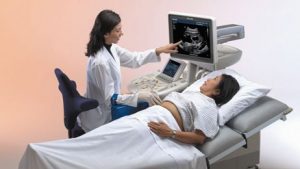 Ultrasound imaging, also called ultrasound scanning or sonography, involves exposing part of the body to high-frequency sound waves to produce pictures of the inside of the body. Ultrasound exams do not use ionizing radiation (x-ray). Because ultrasound images are captured in real-time, they can show the structure and movement of the body’s internal organs, as well as blood flowing through blood vessels.
Ultrasound imaging, also called ultrasound scanning or sonography, involves exposing part of the body to high-frequency sound waves to produce pictures of the inside of the body. Ultrasound exams do not use ionizing radiation (x-ray). Because ultrasound images are captured in real-time, they can show the structure and movement of the body’s internal organs, as well as blood flowing through blood vessels.
Ultrasound imaging is usually a painless medical test that helps physicians diagnose and treat medical conditions.
What is an Obstetrical 4D Ultrasound?
“4D” is shorthand for “four-dimensional”- the fourth dimension being time. As far as ultrasound is concerned, 4D Ultrasound is the latest ultrasound technology. 4D Ultrasound takes three-dimensional still ultrasound images and adds the element of time to the process. The result: live action images of your unborn child.
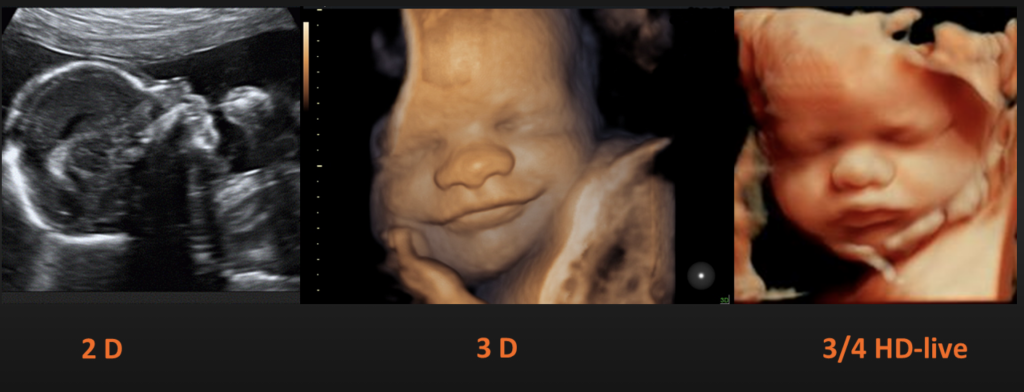
As with all ultrasound systems, it can be used to research the following
- Determining the age of the baby
- Analyzing development of the baby
- Evaluating multiple pregnancies
- Detecting structural problem with uterus
- Detecting placental abnormalities
- Detecting abnormal bleeding
- Determining ectopic pregnancy
- Detecting ovarian tumor/fibroids
- Locating the placenta
3D/4D ULTRASOUND LIVER ELASTOGRAPHY
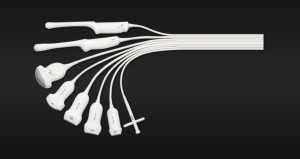 Elastography uses low frequency vibrations during an ultrasound or MRI to measure the stiffness (or elasticity) of organs inside the body. It is particularly useful for detecting the presence and severity of liver disease.
Elastography uses low frequency vibrations during an ultrasound or MRI to measure the stiffness (or elasticity) of organs inside the body. It is particularly useful for detecting the presence and severity of liver disease.
Others ultrasound procedures performed at Lakes Radiology:
- 4D Baby Profile
- Obstetrical
- Breast
- Pelvic
- Thyroid
- Scrotum Ultrasound
- Renal
- Abdomen and Pelvis
- Transvaginal
- Transrectal
- Soft Tissue
- LUQ
- Carotids
- Vascular (Arterial and Venous)
- Echocardiograms
- Liver
What will I experience during and after the procedure?
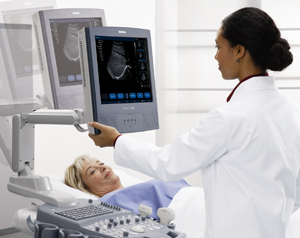 Most ultrasound examinations are painless, fast and easy.After you are positioned on the examination table, the radiologist or sonographer will spread some warm gel on your skin and then press the transducer firmly against your body, moving it back and forth over the area of interest until the desired images are captured. There may be varying degrees of discomfort from pressure as the transducer is pressed against the area being examined. If scanning is performed over an area of tenderness, you may feel pressure or minor pain from the procedure.
Most ultrasound examinations are painless, fast and easy.After you are positioned on the examination table, the radiologist or sonographer will spread some warm gel on your skin and then press the transducer firmly against your body, moving it back and forth over the area of interest until the desired images are captured. There may be varying degrees of discomfort from pressure as the transducer is pressed against the area being examined. If scanning is performed over an area of tenderness, you may feel pressure or minor pain from the procedure.
At times the sonographer may have to press more firmly to get closer to the embryo or fetus to better visualize the structure. Any discomfort is usually minimal and temporary. If a Doppler ultrasound study is performed, you may actually hear pulse-like sounds that change in pitch as the blood flow is monitored and measured. With transvaginal scanning, there may be minimal discomfort as the transducer is moved in the vagina, especially when the bladder begins to refill. Once the imaging is complete, the gel will be wiped off your skin.After an ultrasound exam, you should be able to resume your normal activities.
What are the benefits?
- Ultrasound scanning is noninvasive (no needles or injections) and is usually painless.
- Ultrasound is widely available, easy-to-use and less expensive than other imaging methods.
- Ultrasound imaging uses no ionizing radiation.
- Ultrasound scanning gives a clear picture of soft tissues that do not show up well on x-ray images.
- Ultrasound causes no health problems and may be repeated as often as is ecessary if medically indicated.
- Ultrasound is the preferred imaging modality for the diagnosis and monitoring of pregnant women and their unborn infants.
- Ultrasound has been used to evaluate pregnancy for nearly four decades and there has been no evidence of harm to the patient, embryo or fetus. Nevertheless, ultrasound should be performed only when clinically indicated.
- Ultrasound allows the doctor to see inside the uterus and provides much information about the pregnancy.
ACR Accreditation
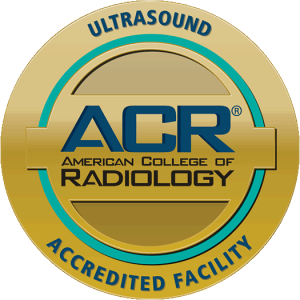 Lakes Radiology is an Accredited Facility with the American College of Radiology. ACR Accreditation is recognized as the gold standard in medical imaging since 1987.
Lakes Radiology is an Accredited Facility with the American College of Radiology. ACR Accreditation is recognized as the gold standard in medical imaging since 1987.
The American College of Radiology® (ACR®) is a nonprofit professional society representing radiologists, nuclear medicine physicians, radiation oncologists and medical physicists. It is the largest and oldest imaging accrediting body in the U.S., with a current membership of 39,000 physicians and medical physicists. The core purpose of the ACR is to serve patients and society by empowering its members to advance the practice, science and professions of radiological and radiation oncology care.
Schedule an appointment
To schedule an appointment at Lakes Radiology please call (305) 231-1115 or fill out the form below.
Our Services
Business Hours
- Monday
- Tuesday
- Wednesday
- Thursday
- Friday
- Saturday
- Sunday
- 8AM - 5PM
- 8AM - 5PM
- 8AM - 5PM
- 8AM - 5PM
- 8AM - 5PM
- 8AM - 3PM
- Closed
